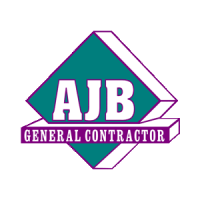Subcontracting 101 for Building Owners
The basics provided in “Subcontracting 101 for Building Owners” is a helpful primer that can make hiring subcontractors a positive experience.
Sounds simple enough; hire a subcontractor and have them perform the work that needs to be done. Saving money and keeping control seems like a reasonable and logical approach. Besides, it might be fun to play the role of general contractor. It can’t be that hard.
Dealing with subcontractors can be a rewarding experience, however, there are a number of basic steps that need to be followed to bring any level of fun or enjoyment to the process. The key basics are:
Define the Scope of Work in Advance
In order to clearly communicate the desired scope of work it is critical to put it in writing. Going through the process of putting the scope on paper requires a thoughtful approach that should follow a logical process. A sketch or concept design is a great way to help provide clarity so that various views, measurements and details are shown to show someone else the concept that initially resides as nothing more than a mental concept or idea buried deep within your mind. Subcontractors do not read minds so please get the details on paper. The more information and detail that are provided, the better the probability for a successful project and favorable conclusion. Do not skimp on this step; otherwise, there will be unintended consequences. Finally, include the scope of work as an attachment to the Subcontract Agreement and rely on it as the road map for the project.
Qualify Subcontractors
There are good people and marginal people in each and every aspect of life. Keep this in mind when you are comparing prices for the project. The last thing to be done is look at price as part of the decision process. Do not us only price as the primary driver in the decision process. Quite often there are reasons a price is substantially lower than a competitors. Here are a few steps to follow in helping determine which subcontractor to use:
- Check with the Nevada State Contractors Board (www.nvcontractorsboard.com) to see if they are licensed, insured and bonded. How long have they been in business and do they have any complaints against them from previous customers.
- It is also recommended to check with the Better Business Bureau (www.southernnevada.bbb.org) and see if they have a complaint history. If they are not a member of the BBB it only means that company did not join the BBB it should have no bearing on the quality of the business. New subcontractors and those with numerous complaints increase the likelihood of a less than satisfactory outcome.
Project Deliver
Start date, project duration and estimated project completion dates are important components to a successful project. So be sure to talk about them with each subcontractor during the bidding process and be sure to get these three time critical components in the Subcontract Agreement. Remember; start time, duration and estimated completion date.
The Final Decision
If you have done your homework you will have several quotes from qualified subcontractors that are all bidding on the same scope of work (you must verify all bids follow the scope). One more thing to consider are the personalities involved and the simple question is – Can you work with that person, do you have confidence in them to deliver, and do you like them. There is nothing worse than dealing with someone you do not feel good about working with. Human intuition is a valuable tool so use it. If it doesn’t feel right it probably isn’t right.
Getting the Work Done
By following the basics of “Subcontracting 101 For Owners” and using the Subcontract Agreement, scope of work and attachments (sketch’s and plans) the path is defined on the roadmap to achieving a successful project, as long as good decision were made along the way. It is very important the process is managed and you provide the oversight. You developed the outline that, if followed and managed, should lead to a good conclusion. Once the subcontractor starts to work it is not time to just turn them loose. This is the point in time to focus and monitor the progress. Your level of engagement is critical.
In Conclusion
Developing and communicating a good scope of work, culling through the bidding process using qualified subcontractors, insuring the subcontract agreement is thorough and complete, selecting the most qualified subcontractor, not just the cheapest one, and managing the construction process is both art and science
If you find the burden of “Subcontracting 101 for Building Owners” is more difficult than expected and would like professional help, advice or if you have questions we are here to help.



